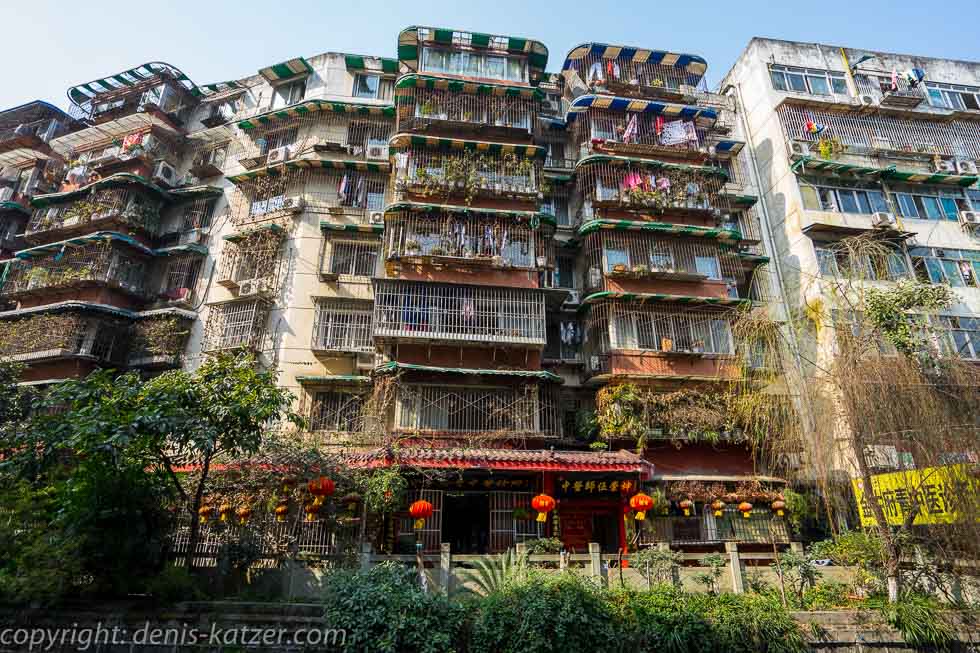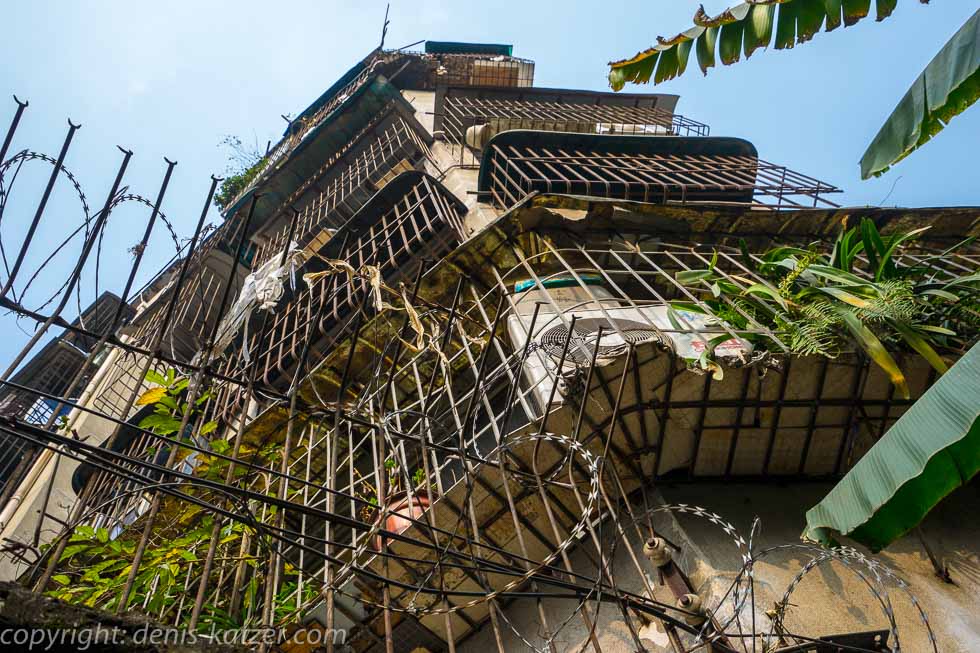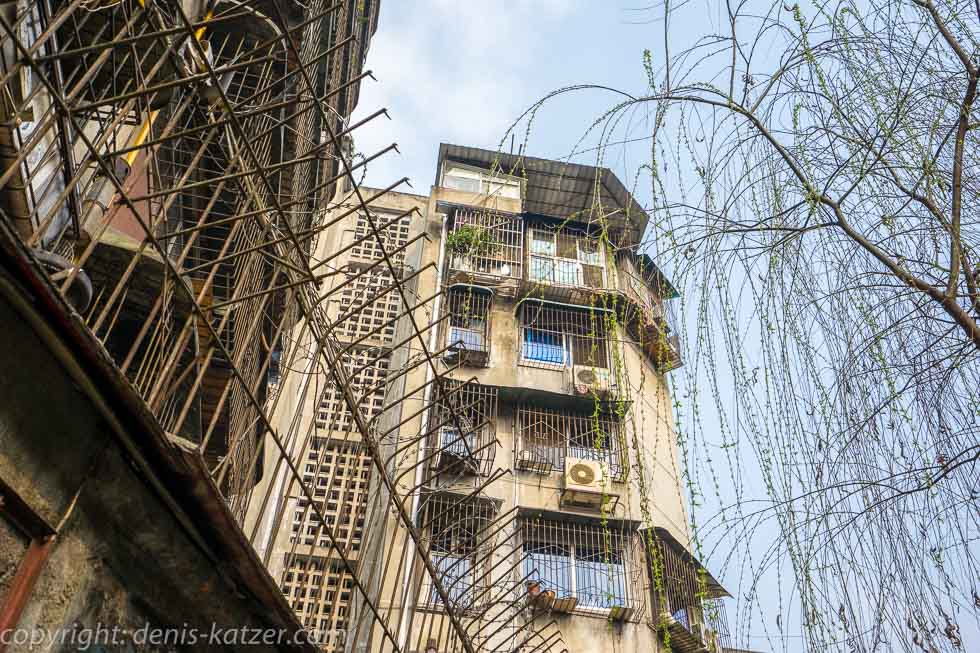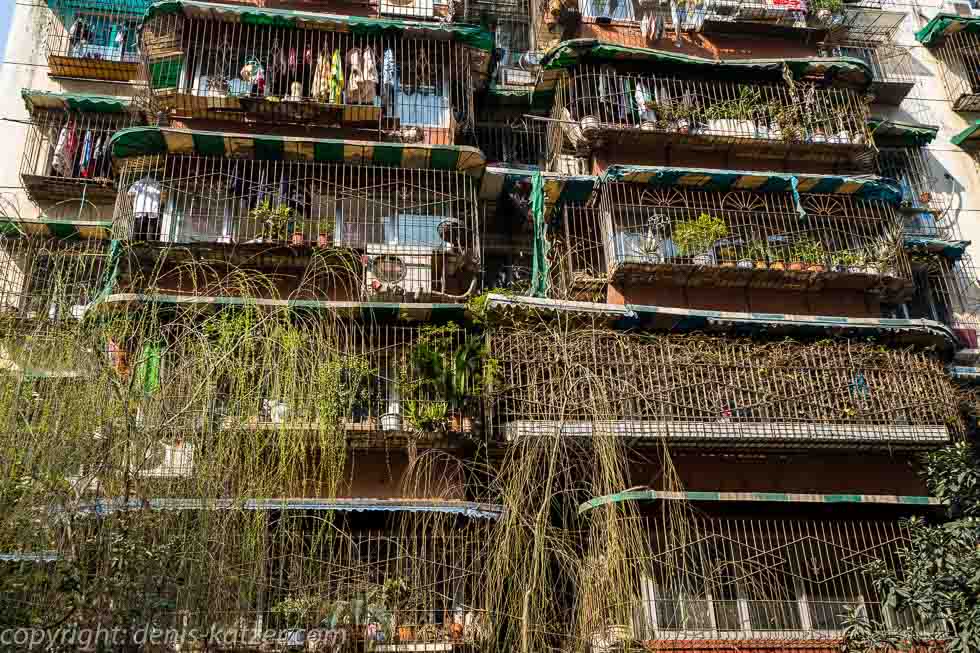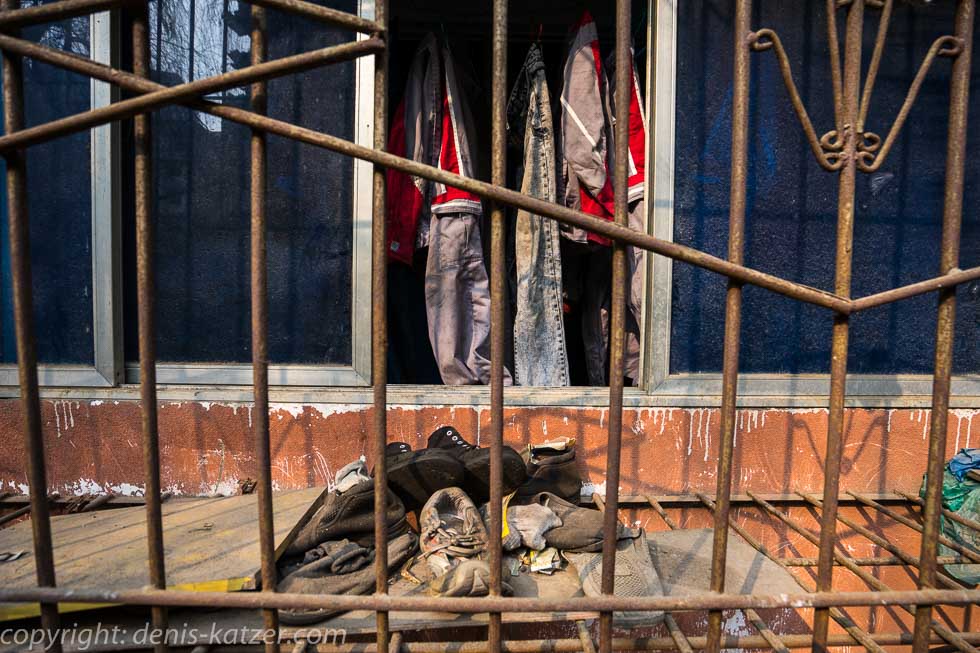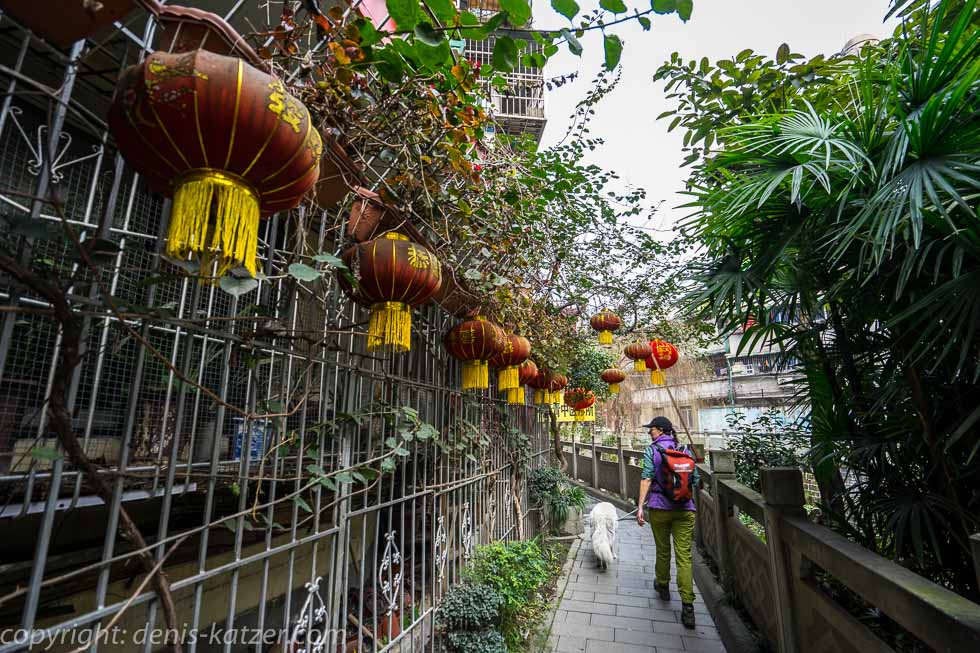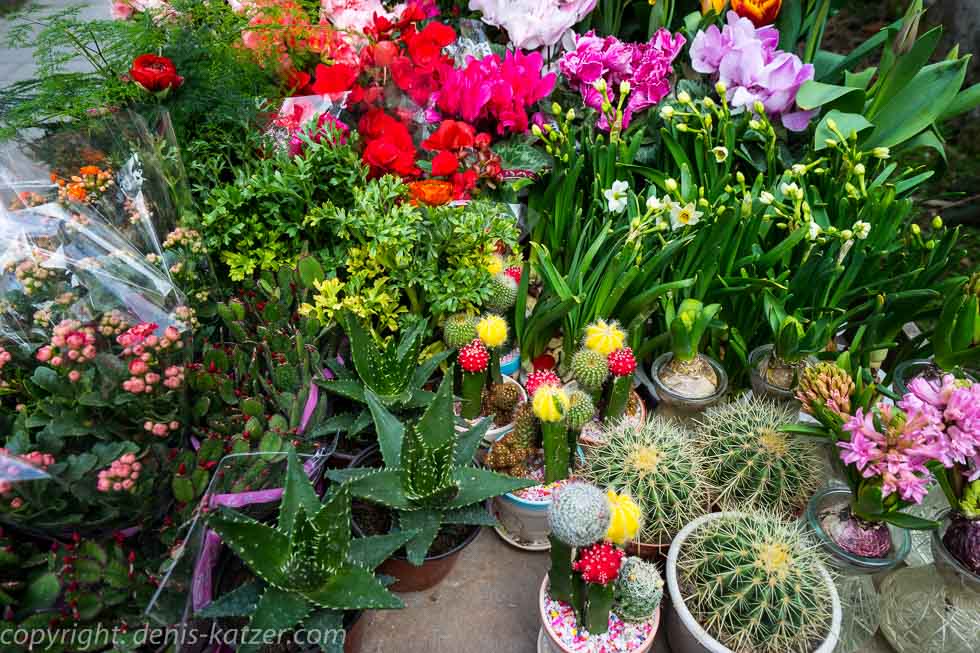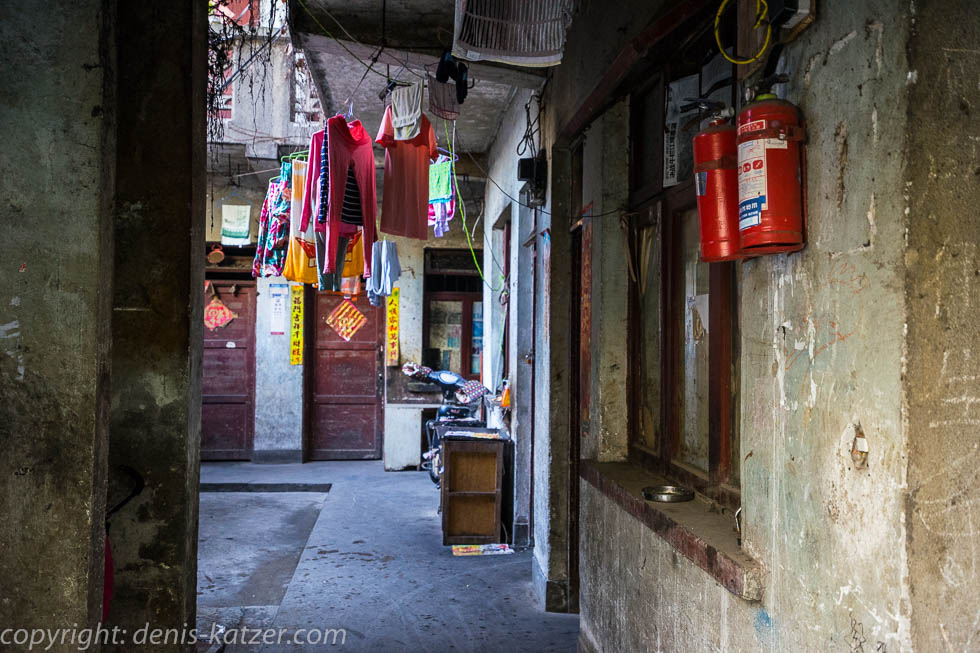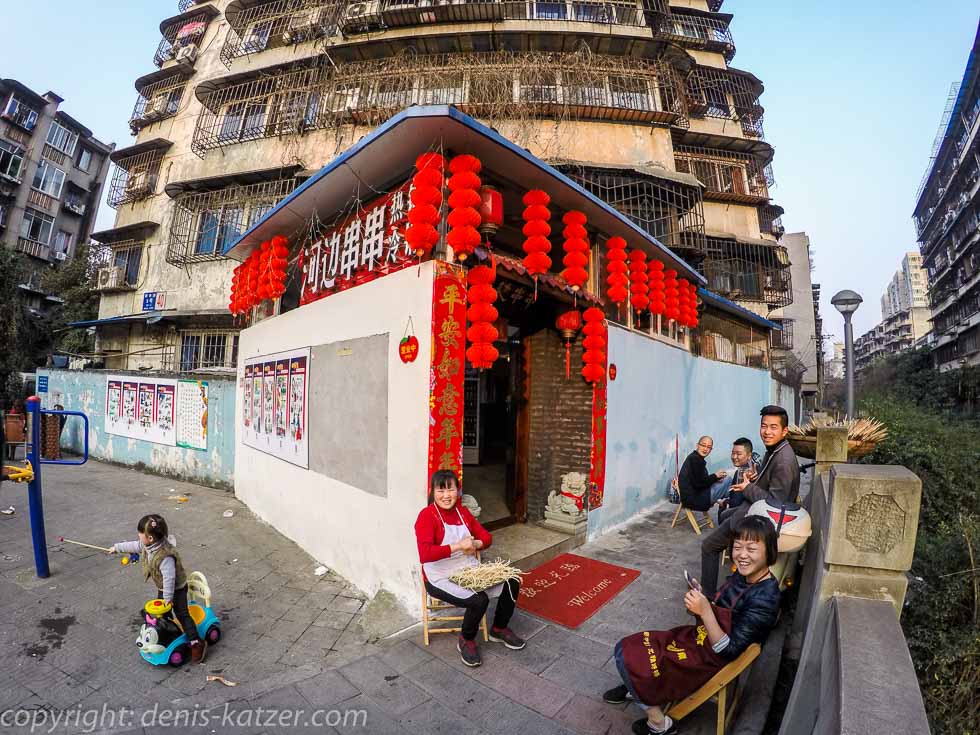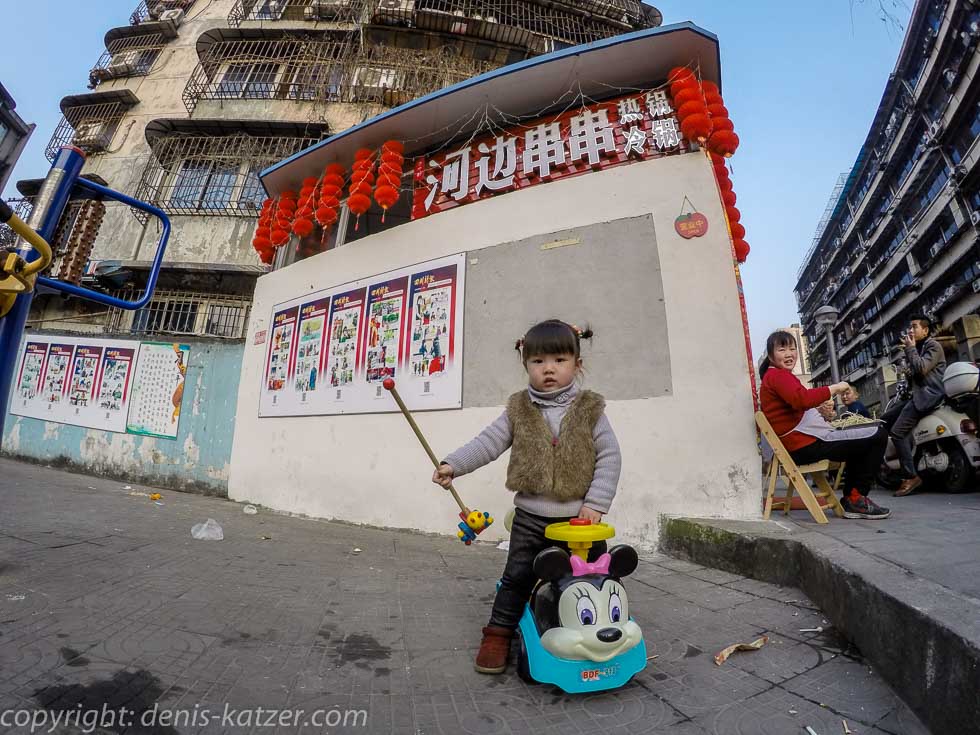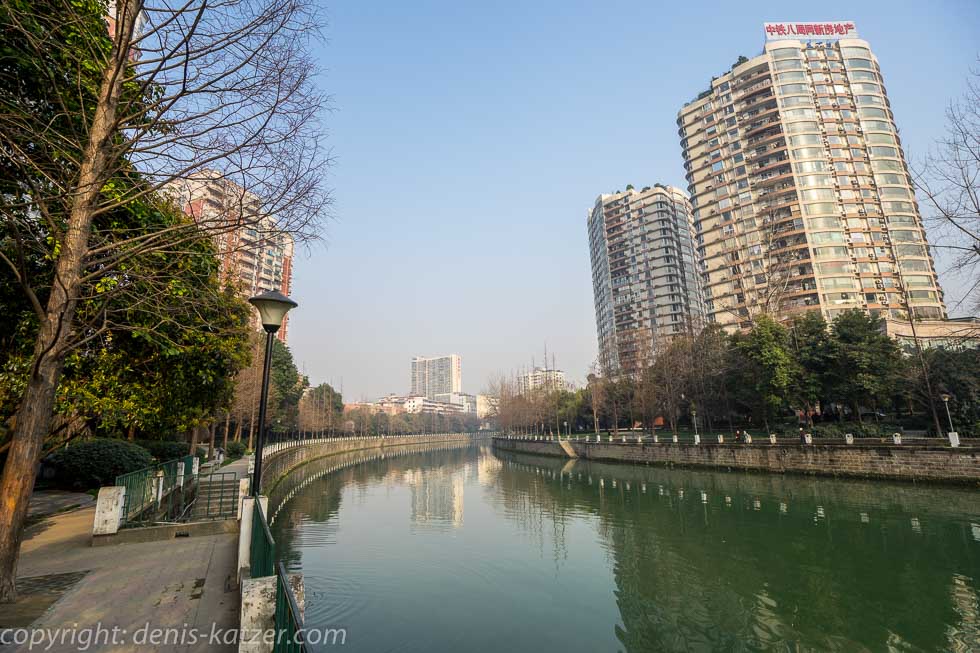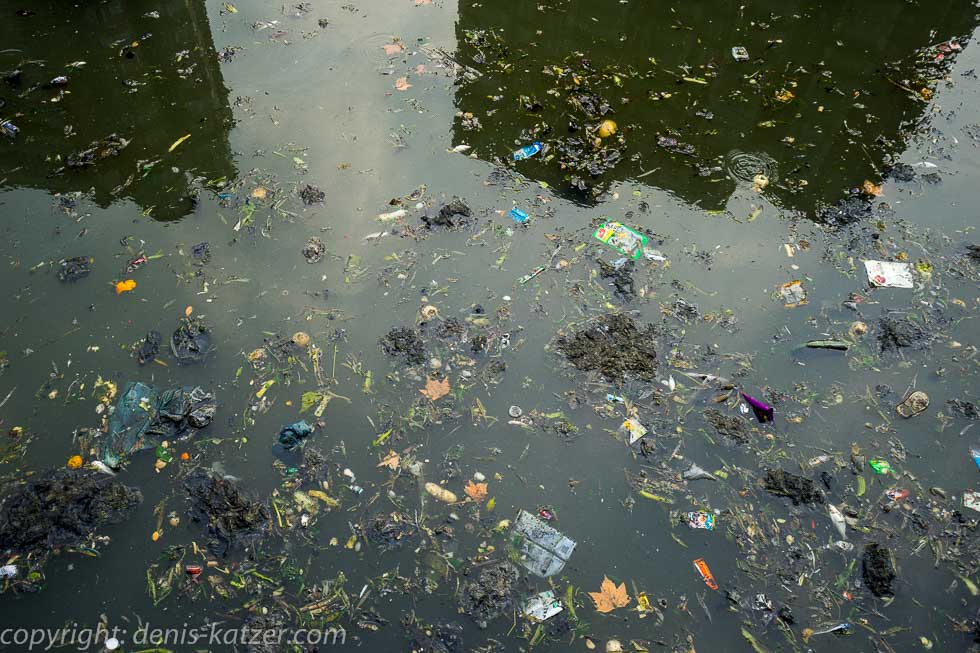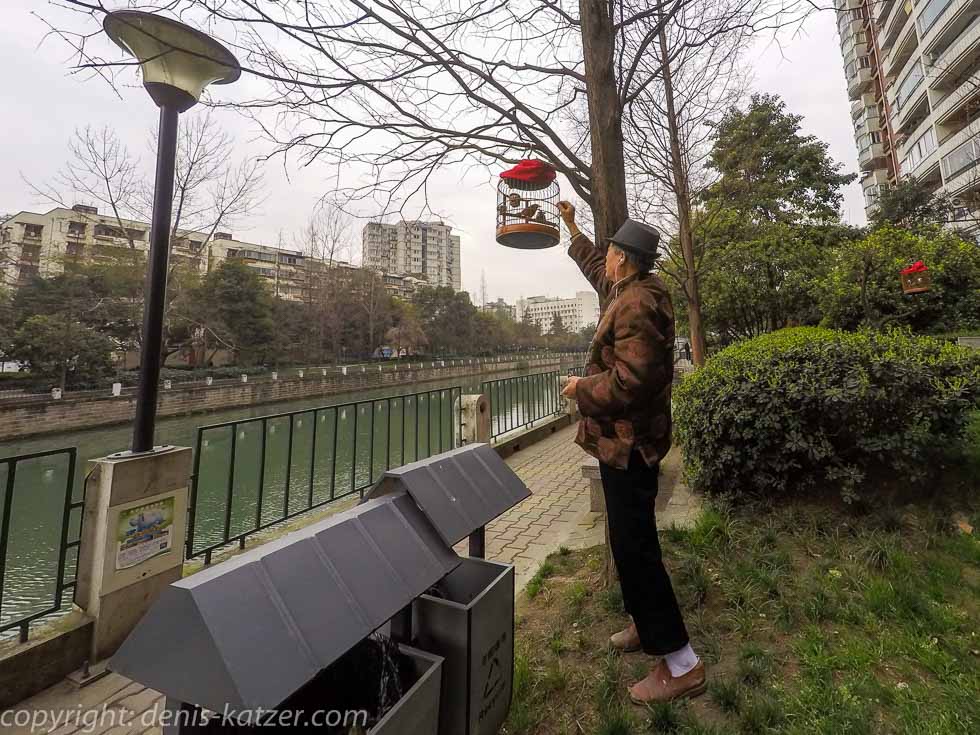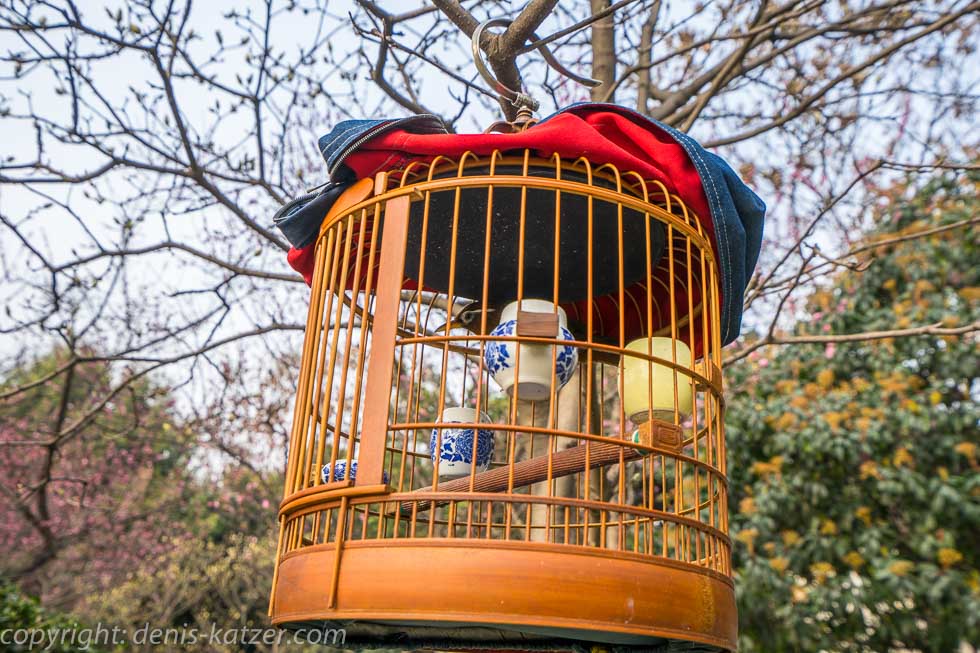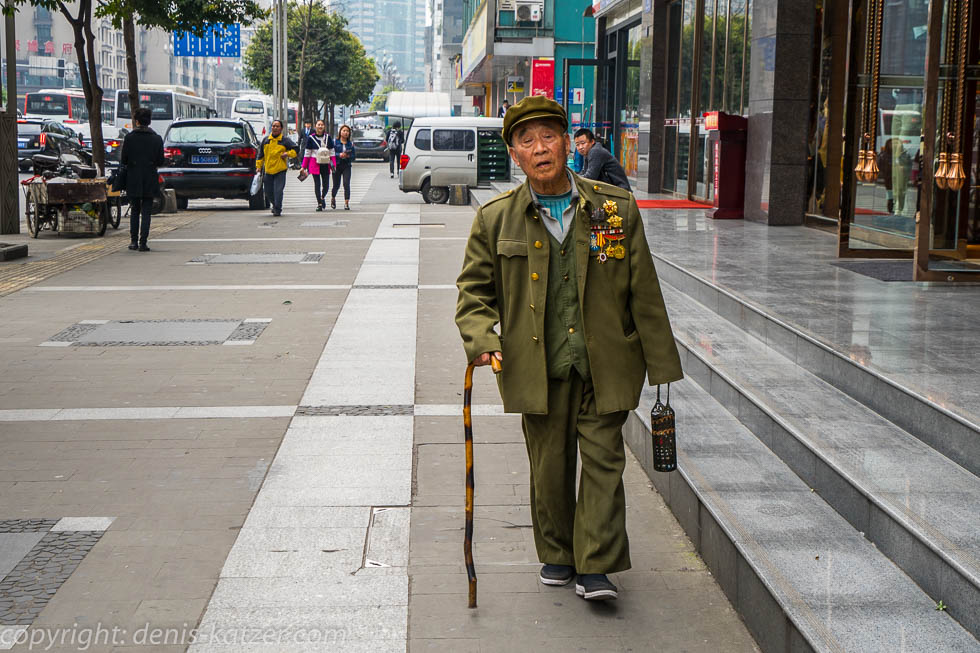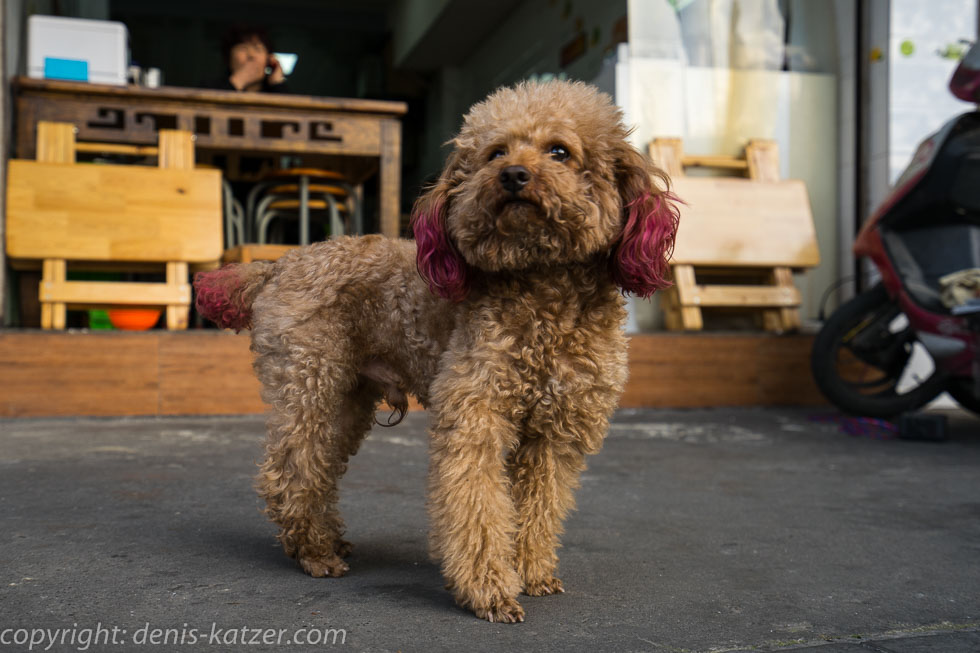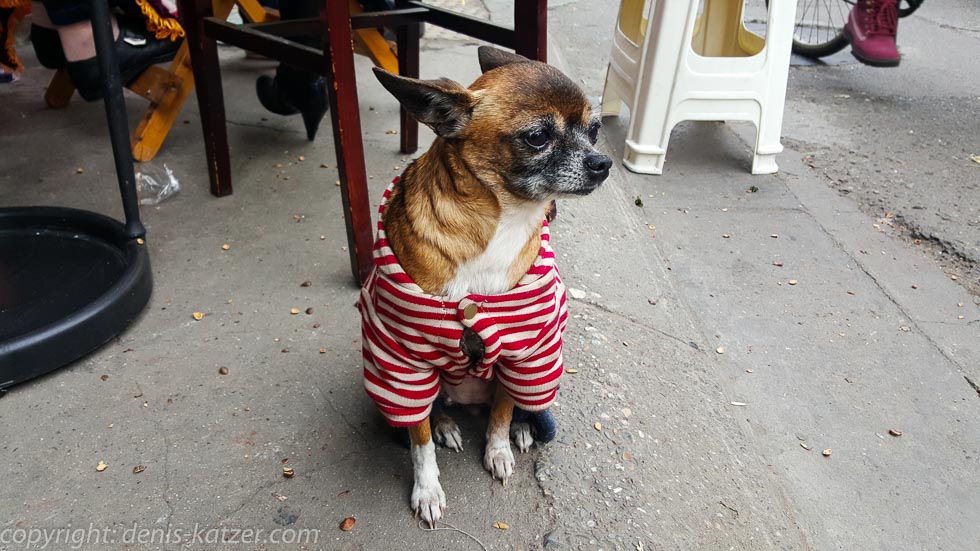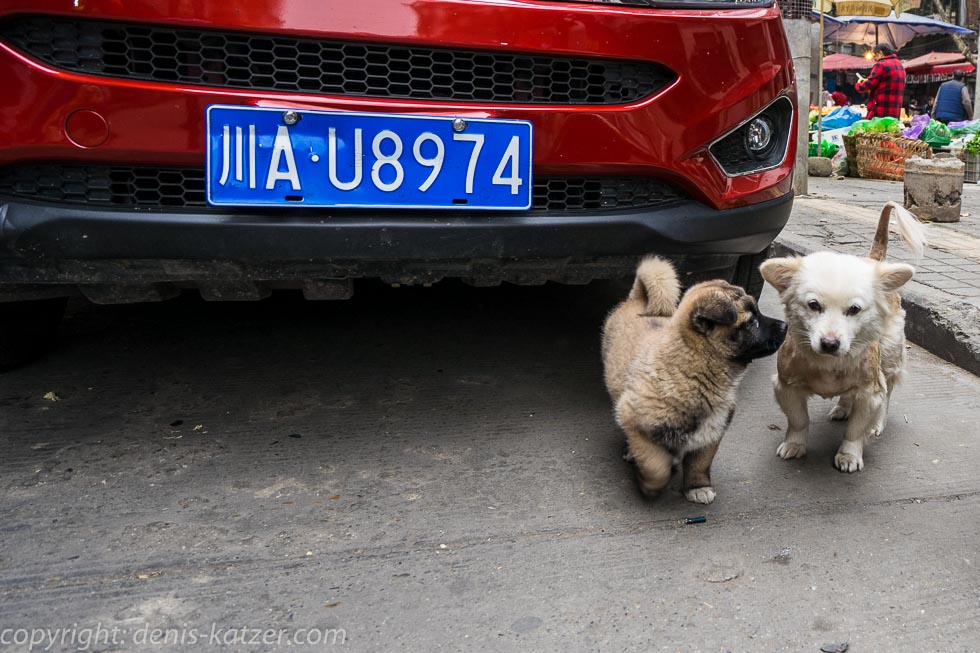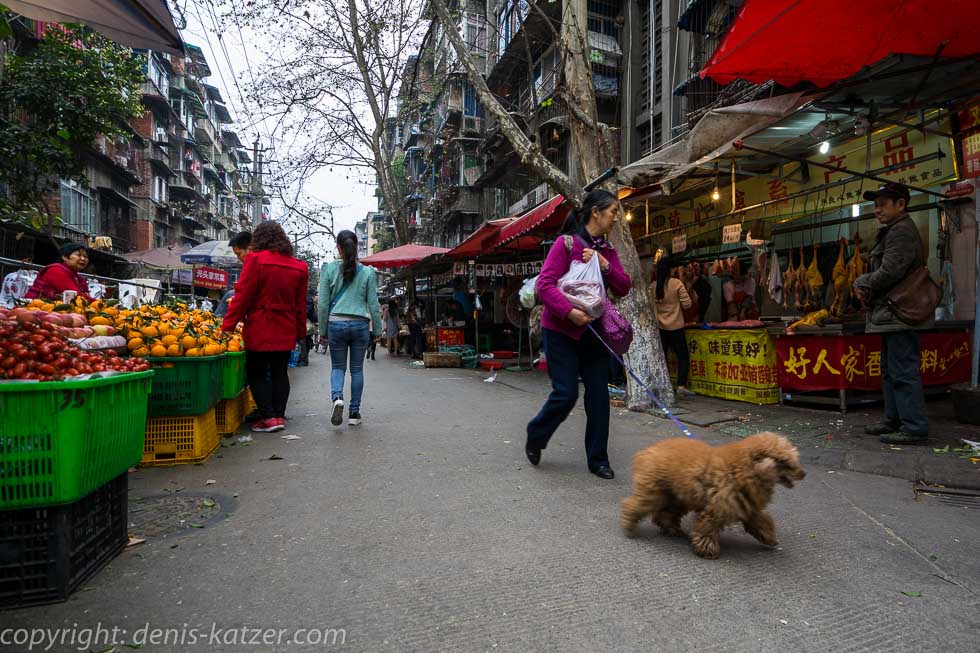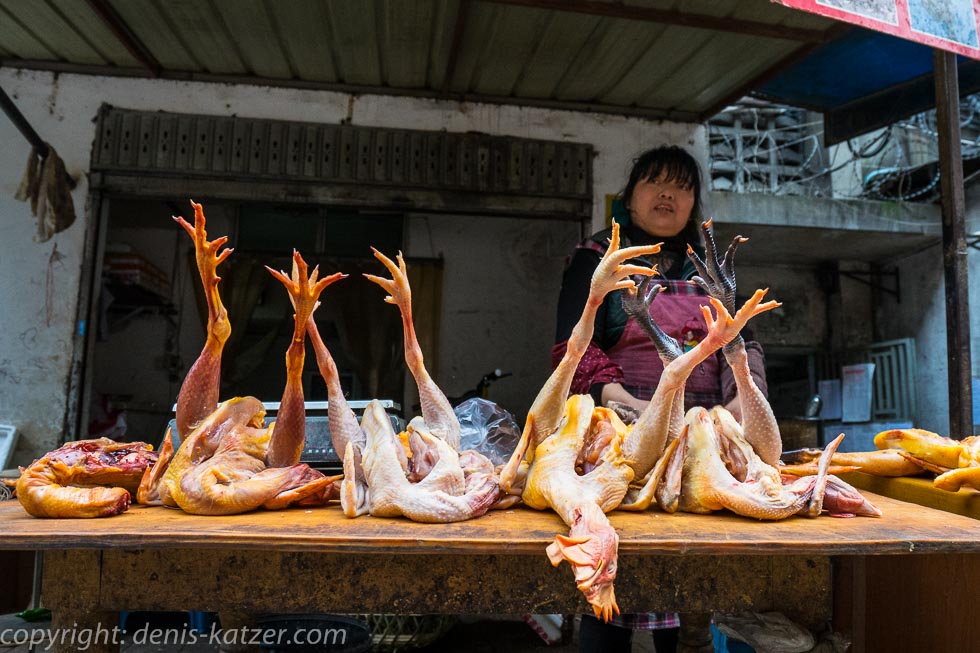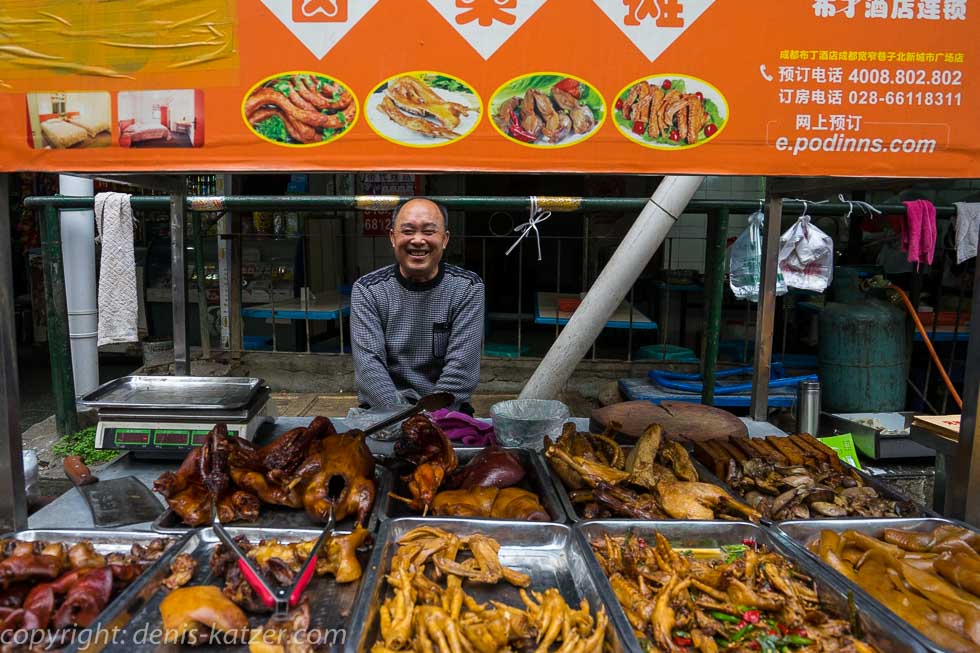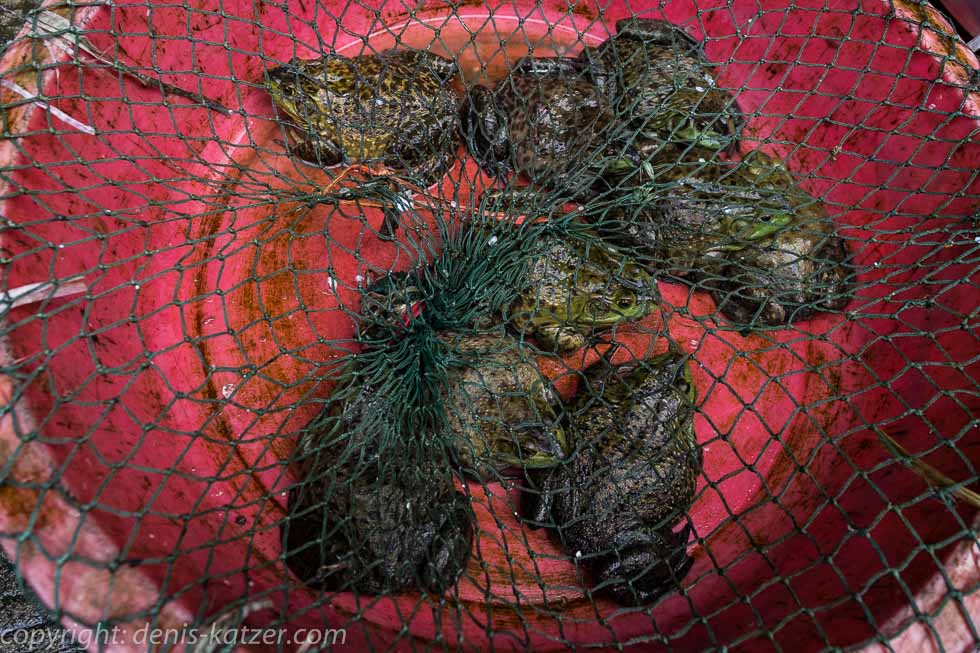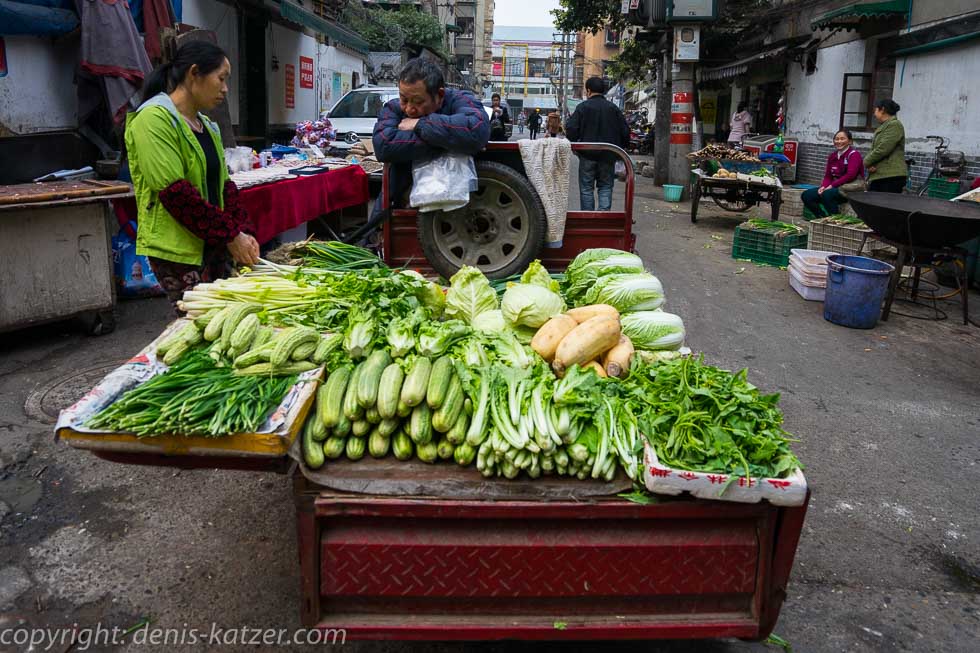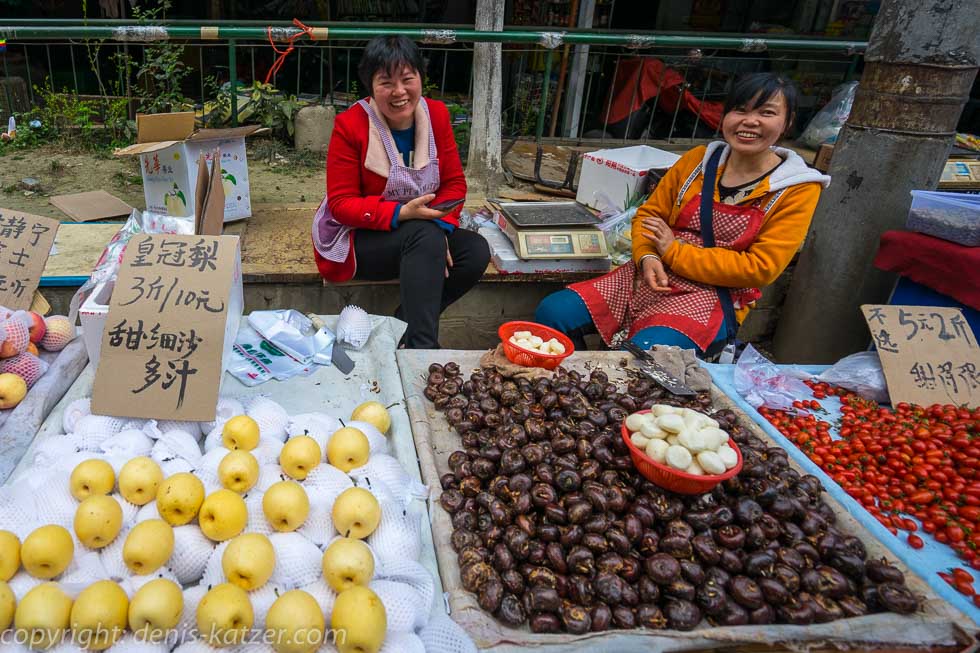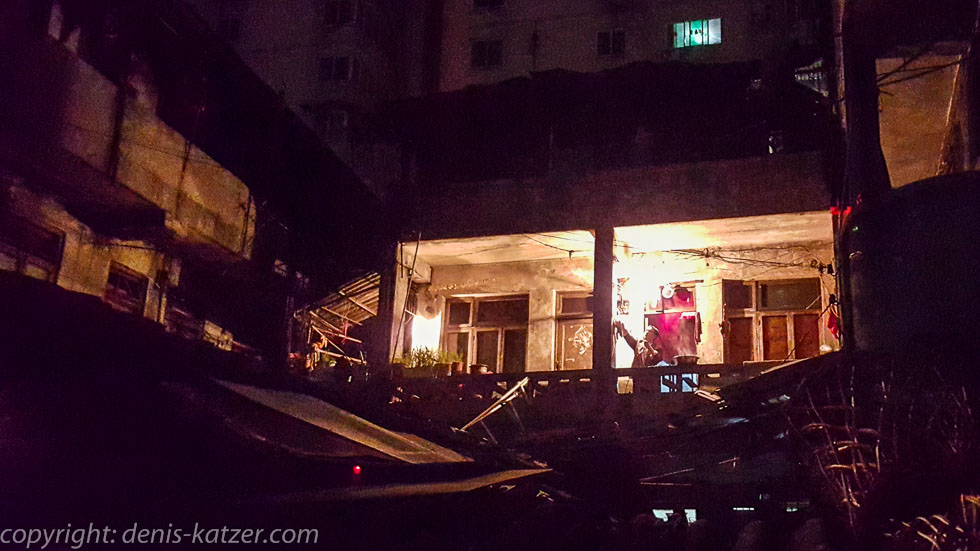
The rhythmic pulse of an ancient city
N 30°40'51.0'' E 104°03'23.2''
Date:
28.02.2016 until 29.02.2016
Day: 244 – 245
Country:
China
Province:
Sichuan
Location:
Chengdu
Latitude N:
30°40’51.0”
Longitude E:
104°03’23.2”
Total kilometers:
12,819 km
Maximum height:
500 m
Total altitude meters:
25.392 m
Sunrise:
07:33 am – 07:31 am
Sunset:
7:00 p.m.
Temperature day max:
19°C
Temperature day min:
12°C
(Photos of the diary entry can be found at the end of the text).
First thing in the morning, we take care of Tanja’s train ticket from Chengdu to Vietnam. As planned, she will leave first, while I stay with Ajaci and use the time to write down our many experiences and archive pictures. At lunchtime, we leave the Nice House Hostel, with its helpful staff, and look for one of the many small restaurants, which mainly serve the spicy dishes that are famous for this region. Tanja and I walk along a canal through which a horrible smelling cesspool flows. To the left and right are residential bunkers that have fallen victim to excavators in other parts of the city in the course of modern building development. The windows of the six or ten-storey houses are secured with massive, rusty bars. Barbed wire or outwardly curved iron spikes are obviously intended to deter thieves from robbing the residents. It looks kind of strange,” I wonder about the massive archaic security measures. “Do you really think there’s so much theft here?” asks Tanja. “I don’t think they do it for fun. We’re in a big city and in every metropolis in the world with millions of inhabitants, there’s also a part of the population that lives from taking things from others,” I say. “But it’s strange that they have bars in front of the windows even on the tenth floor, isn’t it?” “It’s certainly not difficult to climb up these facades and if only the lower floors are secured, as a thief I would simply climb up to an unsecured floor. Such a facade climber is certainly not interested in stealing a flat screen, but cash or other valuables such as jewelry. He simply climbs into an open window, grabs what he can and takes off again,” I think.
The residents of this neighborhood sit in small courtyards open to the road, drink tea and seem to enjoy the day. Laundry hangs everywhere in the trees, which are about to sprout their young, lime-green spring leaves. The interesting residential area is home to cats. They roam everywhere, sit on walls, ledges, play in backyards and the tomcats fight each other with frightening roars for their territory. Again and again we meet dog owners whose often small four-legged friends are dressed in funny sweaters or suits. They are undoubtedly the darlings of the family and often also a status symbol for their owners.
Life here, away from the noise of the traffic, gives the impression of peace and tranquillity. The clattering of mah-jonng stones can be heard from some of the windows. Dark entrances lead to private gambling dens, where many a city dweller tries to satisfy his gambling addiction or lose his last yuan. Two red lanterns hang in front of a traditional pharmacy from which the scent of exotic herbs and powder mixtures wafts. The owner offers colorful flowers and cacti for sale on the back of an old cargo rickshaw.
We reach a square where many locals sit together and drink tea, just like in the courtyards of the houses. The city is known for its relaxed teahouses. They are places where a plentiful selection of green tea, jasmine tea and eight-costume tea are offered and visitors chat, smoke, mah-jonng, go or play cards. After the stressful entrance to the city, we particularly enjoy our walk through a district that is still unspoiled and tranquil.
Suddenly, the small stinking canal flows into the Min Jiang River, which is also constricted by walls and whose water is just as polluted as that of the canal. In some places it really ferments, which can be recognized by the bubbles on the surface of the water, similar to a boiling soup. We are shocked to see how locals cast their fishing lines into the toxic broth or how destitute women wash their clothes in it. There is a beautiful park on both sides of the river where Chinese people practise Thai Chi, groups of women dance to music, people of all ages play sports or hang the cages of their songbirds in the trees. The owners of the birds sit together in small groups, smoke their pipes and chat. With proud expressions on their faces, they let us photograph them in front of their beautifully singing birds.
Unexpectedly, one of the narrow alleyways spits us out into a market. Colorful stalls stand close together and press against the walls of the houses to the left and right of the dark alley. Overhanging umbrellas and partly tattered awnings protect the diverse merchandise, which is why the sky, clouded by smog, can only be seen as a gray strip of light. A rickshaw heavily laden with boxes pushes its way through the crowd. People and dogs jump to the side. The usual lanterns dangle in front of a building. Bright red, black and yellow Chinese characters light up and flash at us from all directions. The dirt on the street is frightening and its composition hard to define. Stray dogs rummage through the garbage. Their fur is eaten away by mange. Other dogs, on the other hand, sit next to their masters, full and well-fed. It crunches under my feet. Startled, I look at a decomposed chicken’s head. The traders scream and seem to shout at their customers. This is normal in China, where people shout almost everywhere and at all times. At first we thought these people would argue incessantly, but in the meantime we have become accustomed to their extremely loud and sometimes rude behavior. The hustle and bustle here is difficult to describe in words. Smells of flowers, slaughtered pork hanging from coarse hooks, plucked chickens lying on tables, fat live toads bouncing lazily in bowls, live turtles sitting in their excrement and waiting for their end in the cooking pot, eels swarming around in small plastic bowls and gasping for air, dead and live fish of all sizes and types, fresh vegetables and fruit of all kinds, hot fat in which the most varied flour creations sizzle, exotic dishes that are offered for sale at every corner and end or that rise to our noses from the countless small restaurants and stalls combine to form a symbiosis of aromas that only seems to exist in Asian markets. Amazed, fascinated by the world of different colors and sounds, we walk through a foreign world that has little to do with our culture. China, a country between modern times and the past, is bubbling and alive here. If we didn’t know we were in the 21st century, it would be quite possible to have ventured into one of the long-gone dynasties. As if we had landed in a time machine in the middle of ancient China. The people are shy, look at us curiously, shout, laugh, point and are happy when we catch their attention and capture them with our photo machine.
When we arrive at a main road, the noise of a big city suddenly prevails again. Here, store follows store, restaurant follows restaurant, snack bar follows snack bar. Hairdressers offer their services, luxurious boutiques seem to be endless and the displays in some antique and souvenir stores are sinfully expensive. Chengdu was already a cultural and economic center 2,000 years ago and was known for iron foundries, the extraction of salt, lacquer work and, above all, the production of brocade fabrics. Because of the many mountains surrounding it, the city, which has been fought over time and again throughout history, was in an isolated location and was therefore the residence of independent Sichuanese kingdoms. During our walk through the metropolis, you can still catch a glimpse of history, especially in the small alleyways. In the dark corners, the rest of the old walls, the ground on which people worked, lived, loved and fought thousands of years ago, on which they were born and died, we feel the deep rhythmic pulse of an ancient city…
If you would like to find out more about our adventures, you can find our books under this link.
The live coverage is supported by the companies Gesat GmbH: www.gesat.com and roda computer GmbH http://roda-computer.com/ The satellite telephone Explorer 300 from Gesat and the rugged notebook Pegasus RP9 from Roda are the pillars of the transmission.
